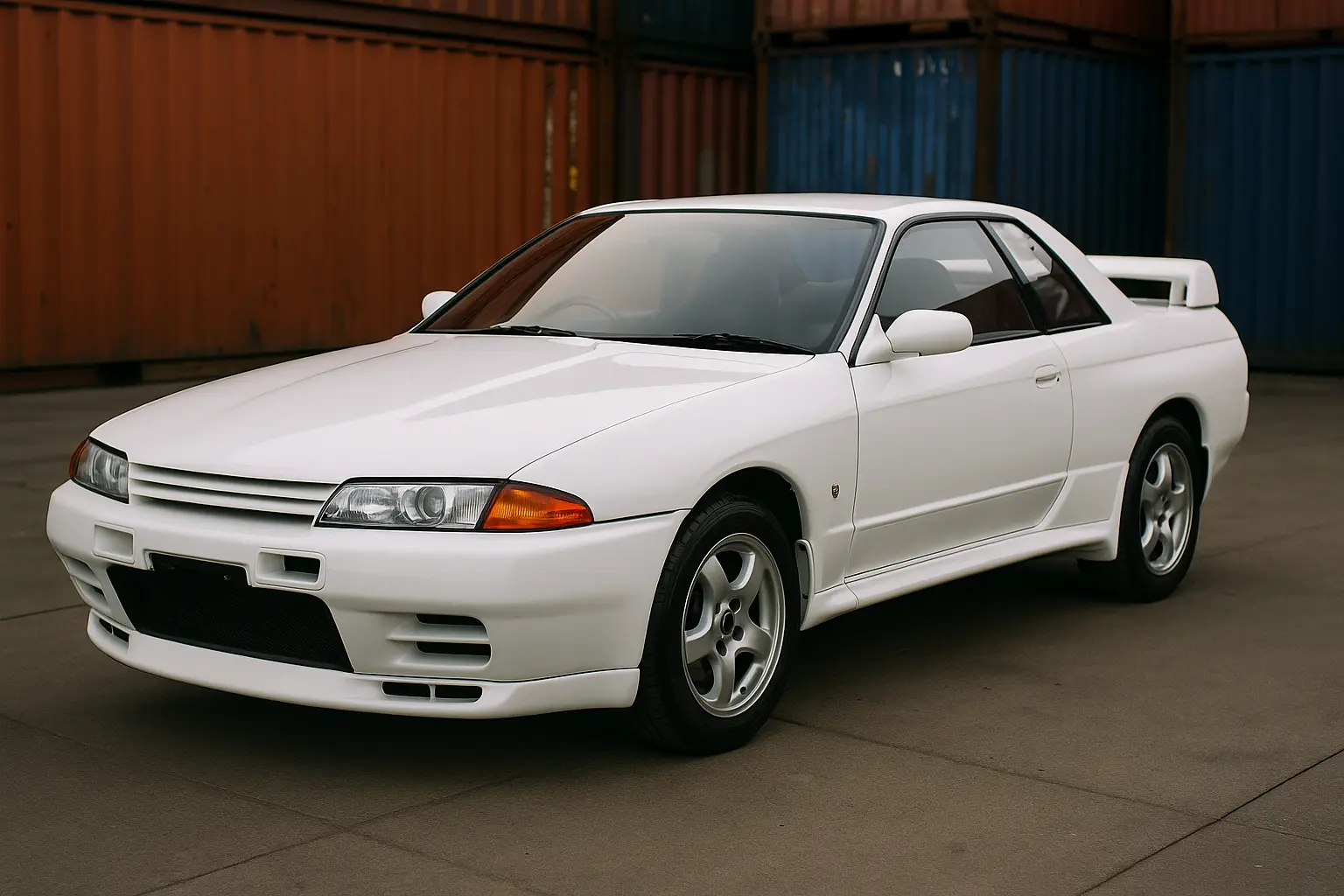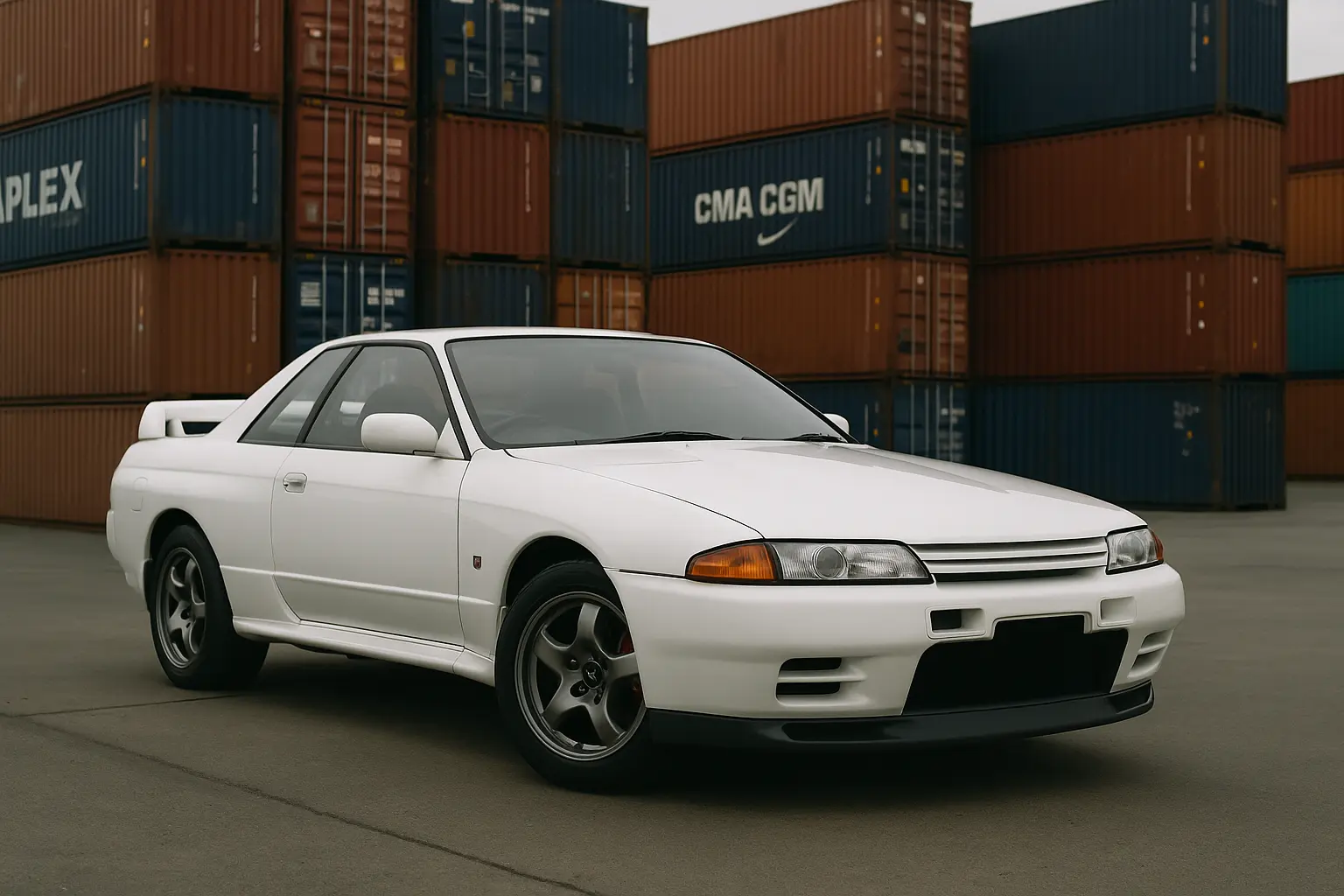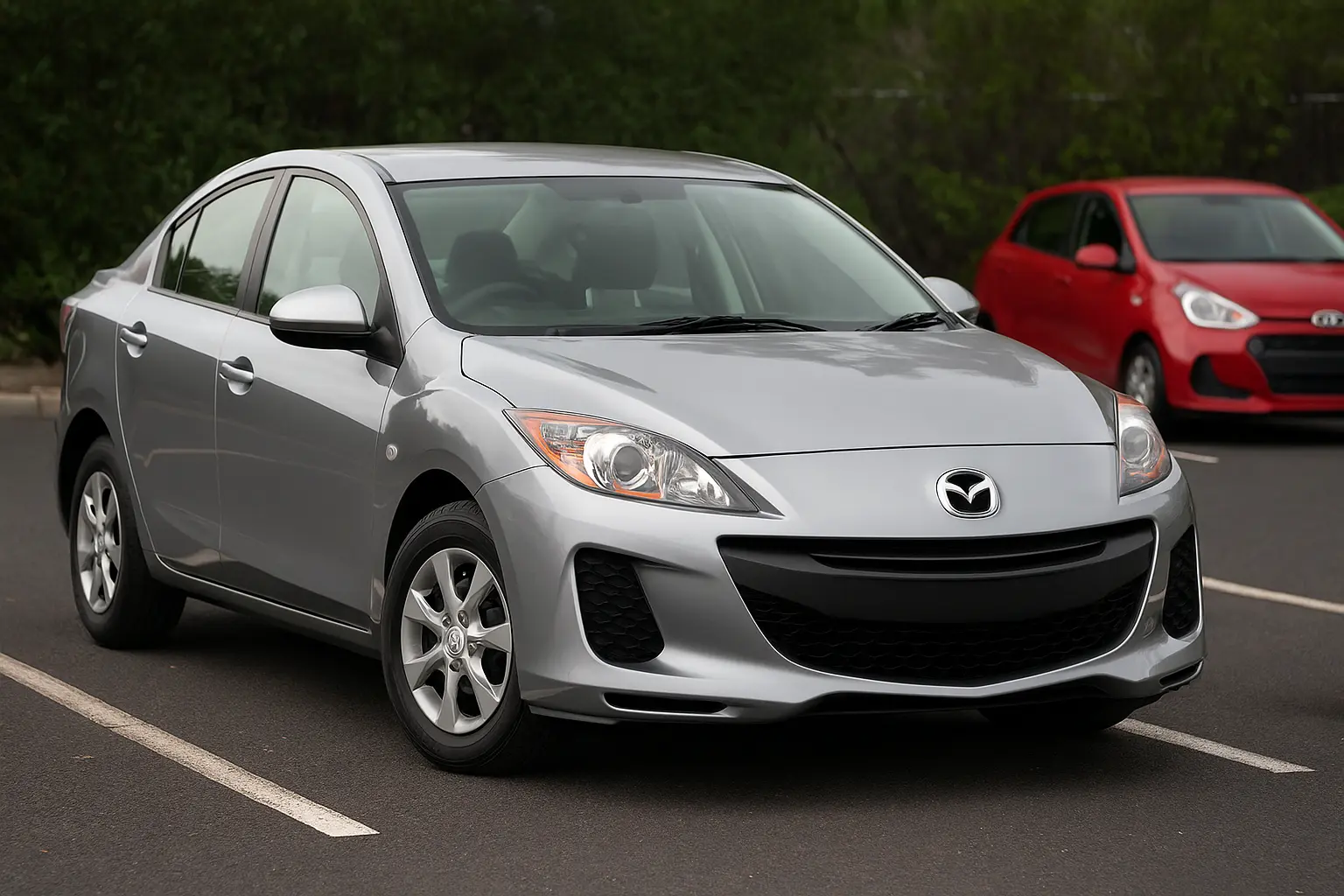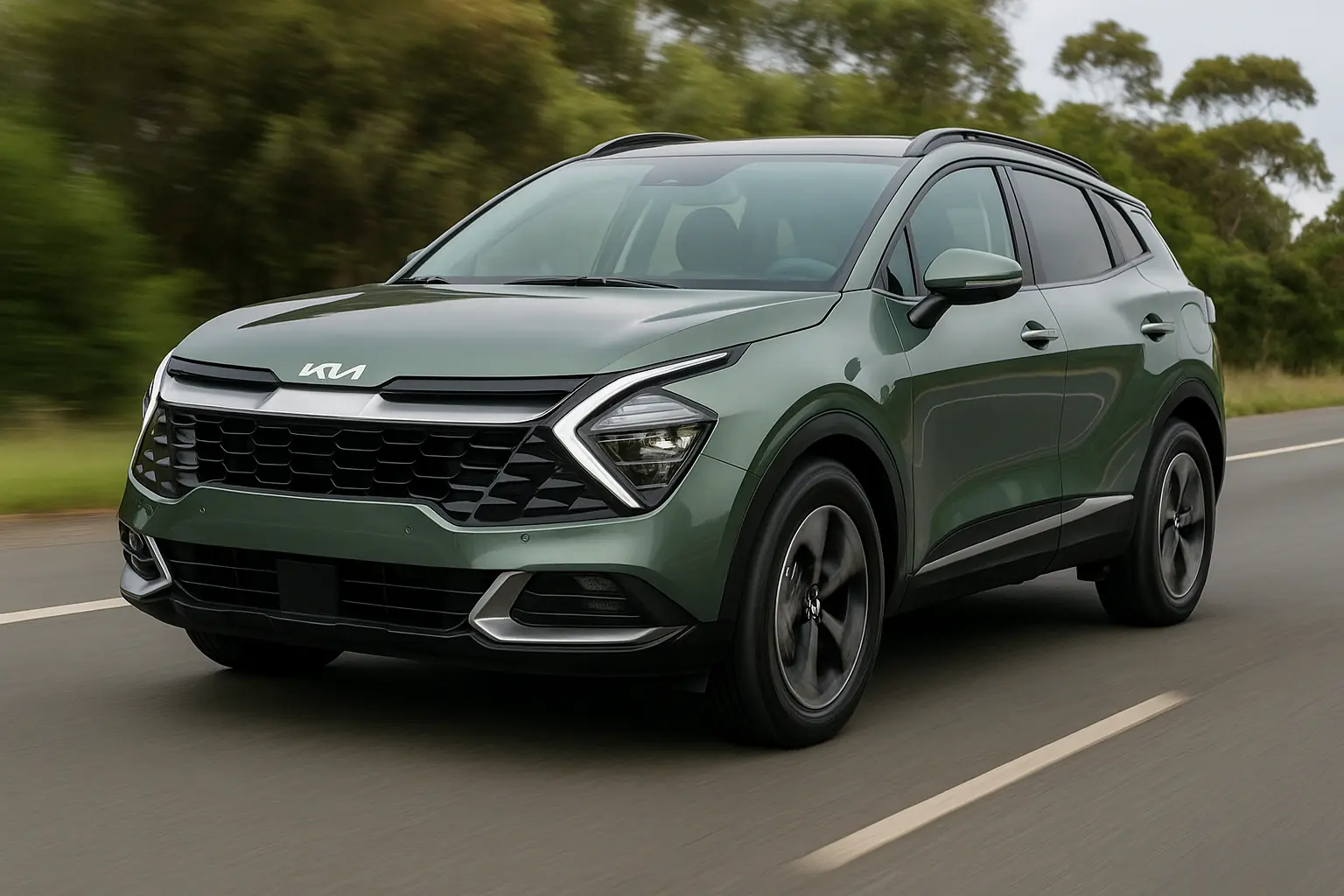Everything to Know Before Importing a Car into Australia in 2025
Importing a car into Australia in 2025 might seem like a dream come true for auto enthusiasts and collectors chasing rare or niche vehicles. Whether it’s a Japanese performance icon, a vintage European classic, or an American muscle car, understanding the ins and outs of Australia’s strict import regulations is essential to avoid unexpected costs, delays, or even vehicle rejection.
This guide provides a comprehensive overview of what you need to know before you commit to importing a car to Australia. We'll cover import eligibility, regulatory frameworks, grey imports, compliance requirements, customs duties, road registration, and tips to streamline the process.

1. Why Import a Car to Australia in 2025?
Australians are increasingly importing vehicles for reasons such as:
Access to models not sold locally (e.g., Nissan Skyline, Honda Beat)
Cheaper prices on second-hand vehicles from overseas
Unique trims or engine configurations not available in the Australian market
Collectible or vintage status
Limited-edition or discontinued performance vehicles
With high vehicle taxes and markups in Australia, imports can be surprisingly cost-effective—even after duties and compliance costs.
2. Understanding Import Approval Pathways
Before importing, you must secure an import approval from the Department of Infrastructure, Transport, Regional Development, Communications and the Arts. In 2025, there are several schemes under which you can apply:
A. Rover – Road Vehicle Regulator System
The new Rover platform governs import approvals. Importers must register and submit applications for vehicles via the portal.
B. Personal Import Scheme
Ideal for returning Australian citizens or residents who have owned and used the vehicle overseas for at least 12 months. Requirements include:
Proof of ownership and use abroad
Proof of residence overseas
Importer must be the same person
C. Specialist and Enthusiast Vehicle (SEV) Scheme
This is the most common pathway for grey imports. Vehicles must be on the SEV Register, which means they meet criteria such as:
Unavailable in Australia
Performance or collectible merit
Left-hand drive with specific exemptions
Unique engine or body variants
Examples: Nissan Silvia S15, Mitsubishi Lancer Evolution VI, Toyota Century
D. Older than 25 Years Rule
Vehicles manufactured over 25 years ago are exempt from many compliance requirements. This is ideal for classic car collectors.
E. Race and Rally Vehicle Scheme
Only for vehicles used exclusively in motorsport. Must be approved by a recognised racing body (e.g., CAMS).
3. Key Compliance Requirements in 2025
Once a car lands in Australia, it must meet the Australian Design Rules (ADRs). These regulations cover safety, emissions, lighting, braking, and environmental standards.
Key ADR Compliance Checks:
Right-hand drive conversion (for LHD imports unless exempt)
Child restraint anchorages
Seatbelt standards
Headlight alignment and specs
Anti-theft measures
Emissions and fuel system standards
Speedometer conversion to km/h
You'll need a Registered Automotive Workshop (RAW) to handle modifications and compliance certification for SEV imports.
4. Grey Imports Explained
“Grey imports” refer to vehicles legally imported outside of the original manufacturer or dealer network. They are not illegal, but they require compliance inspection and approval.
Pros of Grey Imports:
Unique or rare vehicles not available locally
Often cheaper than local models
Enthusiast-focused specs (e.g., turbo, manual variants)
Cons of Grey Imports:
Higher insurance premiums
Longer registration process
Difficulty sourcing parts or repairs
Potential warranty limitations
5. Costs Involved in Importing a Car
A. Upfront Costs
| Item | Estimated Cost (AUD) |
|---|---|
| Purchase Price (overseas) | Varies |
| Shipping & Freight | $1,500–$5,000 |
| Insurance (Transit Cover) | $300–$800 |
| Import Approval Application | $70–$100 |
| GST (10% of car’s value) | Varies |
| Luxury Car Tax (if applicable) | 33% over threshold |
| Duty (5–10% on some vehicles) | Varies |
| Compliance Modifications | $2,000–$5,000+ |
| State Registration & Plate Fee | $1,000–$2,000 |
B. Ongoing Costs
Increased insurance premiums (due to lack of local crash data)
Sourcing grey market parts
Dealer refusal of service (for some makes/models)
Potential resale difficulty
6. Registration Process by State
Each state has slightly different rules for registering imported vehicles. Here’s a quick overview:
| State | Key Requirements |
|---|---|
| NSW (Service NSW) | Blue Slip + proof of compliance |
| VIC (VicRoads) | VASS certificate, roadworthy certificate |
| QLD (TMR) | Import approval + compliance + inspection |
| WA (DoT) | Proof of identity + inspection |
| SA (Service SA) | Identity inspection, engineering if needed |
| TAS, NT, ACT | Similar to above |
7. Risks and Red Flags to Watch
Before importing, beware of:
Flood-damaged vehicles (particularly from Japan or USA auctions)
Odometer tampering
Non-compliant modifications (e.g., illegal exhaust systems)
Shipping scams (never pay via unofficial wire transfer)
Unlisted vehicles not on the SEV register
Always conduct due diligence—get VIN history, auction sheets, and use a trusted broker or import specialist.
8. Working With Import Brokers or Dealers
You can either import a vehicle privately or hire a car import broker to handle the process. A reputable broker will:
Manage paperwork
Handle freight, quarantine, and customs clearance
Organise compliance with a RAW
Assist with state registration
It costs extra but can save you time, fines, and hassle.
9. Is It Worth Importing a Car in 2025?
Yes—but only if:
You're targeting a rare model unavailable locally
You understand the full compliance and cost journey
You're passionate about a specific make or edition
You have support for maintenance and parts
For everyday cars, it’s often easier and cheaper to buy locally. However, for enthusiasts, it opens the door to exciting and otherwise inaccessible vehicles.
10. Example Cars Commonly Imported in 2025
Nissan Skyline R32/R34 GT-R
Toyota Chaser JZX100
Honda Civic Type R (EP3/FD2)
Mazda RX-7 (FD3S)
Toyota Century
Subaru S203/S204
Chevrolet Camaro ZL1 (US market)
BMW Alpina B10 (EU classic imports)
11. EV and Hybrid Imports in 2025
With the rise of EVs, many Australians are now importing:
Nissan Leaf (Japanese Domestic Market)
Mitsubishi i-MiEV
Honda Fit Hybrid
Toyota Aqua (JDM Prius C)
While cheaper overseas, make sure they’re compatible with Australian charging systems and meet safety/emission standards.
12. Tax Benefits and Exemptions
If you import under the Personal Import Scheme, you might qualify for:
GST exemption on personal effects
No luxury car tax if privately owned for over 12 months
Reduced customs duty in some circumstances
Always consult a licensed customs broker or tax agent to assess eligibility.
13. Quarantine and Biosecurity
Every imported car must pass an Australian Quarantine Inspection:
Interior must be steam cleaned
Undercarriage cleaned of soil or plant material
No insects, nests, or biological contamination
If your vehicle fails inspection, it may be fumigated or cleaned at your cost—or even re-exported.
14. Summary Checklist Before Importing
✅ Confirm vehicle eligibility via SEV Register or Personal Scheme
✅ Register on Rover and submit an import approval application
✅ Organise international freight and insurance
✅ Arrange for a compliance workshop (RAW)
✅ Pay customs duty, GST, and other taxes
✅ Complete quarantine inspection
✅ Register your vehicle with your state authority
✅ Secure grey import insurance cover
Final Thoughts
Importing a car into Australia in 2025 isn’t a walk in the park, but it’s a well-worthwhile journey for those who value uniqueness, heritage, and performance. Armed with this guide, you'll have the clarity to make informed decisions—whether you’re chasing a JDM legend, classic cruiser, or niche EV.
Always do your homework, factor in the full cost beyond the car’s price tag, and use trusted channels to avoid heartache.
Leave a comment
Your email address will not be published. Required fields are marked *




















